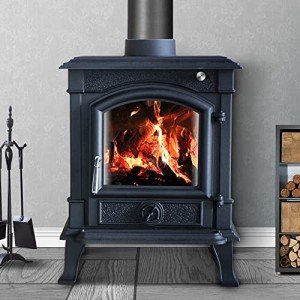When it comes to heating homes efficiently and sustainably, multi-fuel cast iron wood stoves have become increasingly popular. These versatile appliances not only provide warmth but also an old-world charm, making them a favored choice for many homeowners. This guide delves into the features, benefits, and considerations of multi-fuel cast iron wood stoves, offering a complete guide for those interested in investing in one.
What is a Multi-Fuel Cast Iron Wood Stove?
A multi-fuel cast iron wood stove is a type of heating appliance that is capable of burning various types of solid fuels, including wood, coal, and compressed logs. They are constructed from cast iron, a durable and highly efficient material known for its excellent heat retention and distribution properties. These stoves combine traditional craftsmanship with modern technology to create a reliable heating source for any home.
Key Features of Multi-Fuel Cast Iron Wood Stoves
| Feature | Description |
|---|---|
| Material | Manufactured from high-quality cast iron |
| Fuel Options | Can burn wood, coal, peat, briquettes, and other solid fuels |
| Efficiency | High heat output with effective combustion rates |
| Heat Retention | Retains heat long after the fire has died down |
| Aesthetic Appeal | Traditional design adds rustic charm to interiors |
| Eco-friendly Options | Models available that meet environmental standards |
Benefits of Multi-Fuel Cast Iron Wood Stoves
Investing in a multi-fuel cast iron wood stove comes with a multitude of advantages:
- Versatility: The ability to use different types of fuel allows homeowners to choose the most convenient and cost-effective option based on availability.
- Long-lasting Durability: Cast iron is renowned for its strength and longevity, meaning a well-maintained stove can last for decades.
- High Efficiency: Modern designs incorporate advanced combustion technologies that maximize heat output while minimizing emissions.
- Eco-Friendly Heating: Utilizing wood or other natural materials can lower carbon footprints and provide a renewable heating source.
- Cost-Effective: While the initial investment may be significant, multi-fuel stoves can lead to savings on heating bills over time due to their efficiency and fuel versatility.
- Aesthetic Appeal: The timeless design of cast iron stoves adds character to any room, becoming a focal point that enhances decor.
Considerations When Choosing a Multi-Fuel Cast Iron Wood Stove
When selecting a multi-fuel cast iron wood stove, several factors should be taken into account:
- Size and Heating Capacity: Determine the square footage of the area you wish to heat. Stoves come in various sizes, and choosing the right heating capacity is crucial for efficiency.
- Fuel Types Available: Consider the types of fuel you plan to use regularly. Some models are optimized for specific fuels.
- Installation Space: Assess the layout of the room where the stove will be installed, keeping in mind clearance requirements and ventilation needs.
- Regulatory Compliance: Ensure the stove meets local building codes and environmental regulations.
- Maintenance Requirements: Understand the upkeep necessary for your stove to ensure safety and longevity.
FAQ Section
1. How do I maintain my multi-fuel cast iron wood stove?
To maintain your stove, follow these tips:
- Clean the chimney and vents regularly to prevent blockages.
- Remove ash buildup to ensure efficient combustion.
- Inspect the stove for cracks or damage after each heating season.
- Apply high-temperature paint if necessary to maintain its appearance.
2. What fuel is the most economical for multi-fuel stoves?
Costs fluctuate based on factors such as location, availability, and season. However, burning seasoned wood is often the most economical option since it is typically less expensive than coal or briquettes.
3. Can I burn charcoal in a multi-fuel cast iron wood stove?
Generally, charcoal can be used in multi-fuel stoves, but it is crucial to ensure proper ventilation, as charcoal produces harmful gases. Check the stove's manual for specific fuel compatibility and safety measures.
4. What are the environmental benefits of using a multi-fuel stove?
Burning wood and other renewable sources reduces reliance on fossil fuels, thereby lowering greenhouse gas emissions. Additionally, many modern stoves are designed to operate at high efficiencies, creating less smoke and particulate matter.
5. How long can I expect a cast iron wood stove to last?
With proper care and maintenance, a cast iron wood stove can last up to 25 years or more. Regular inspections and timely repairs can extend its lifespan significantly.
The durable multi-fuel cast iron wood stove is more than just a heating appliance; it is a combination of efficiency, sustainability, and elegance. By understanding the features, benefits, and considerations associated with these stoves, homeowners can make informed decisions that enhance their living spaces while enjoying the comforts of a warm and inviting home. Whether you’re replacing an old heater or looking for a new addition to your home heating strategy, a multi-fuel cast iron wood stove could be the perfect option.






